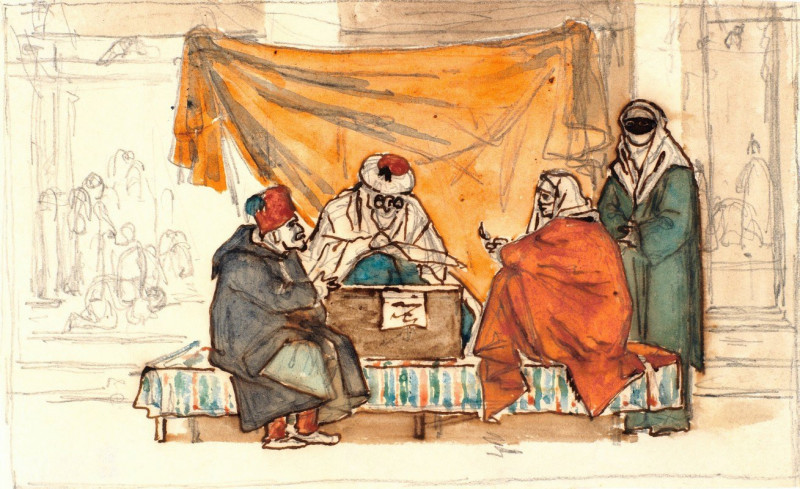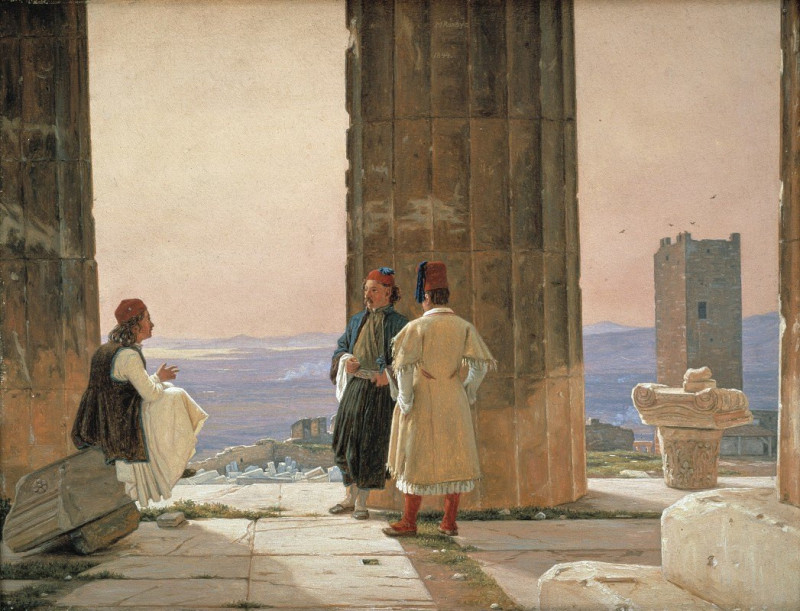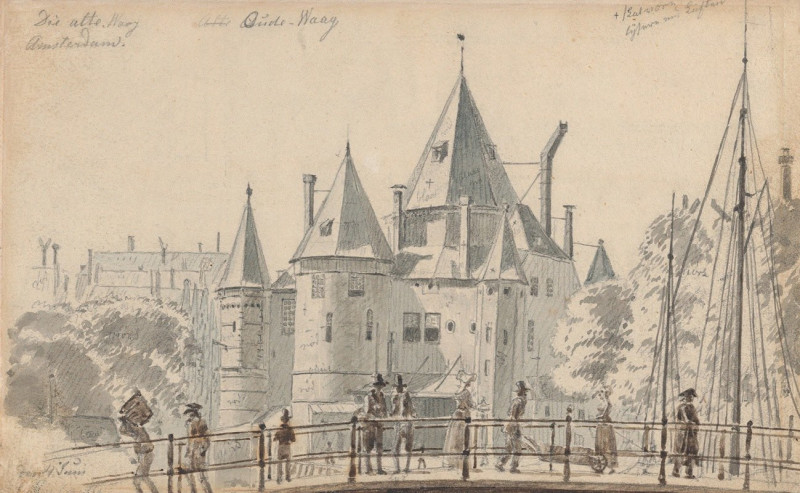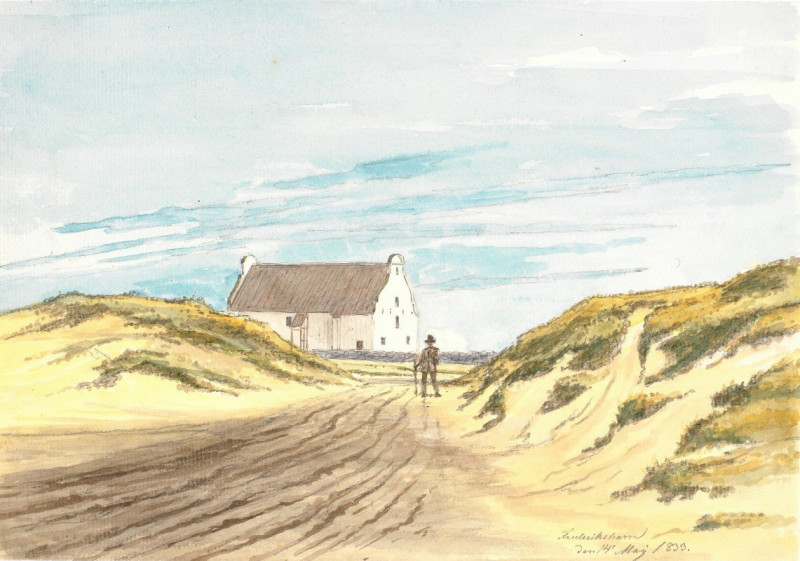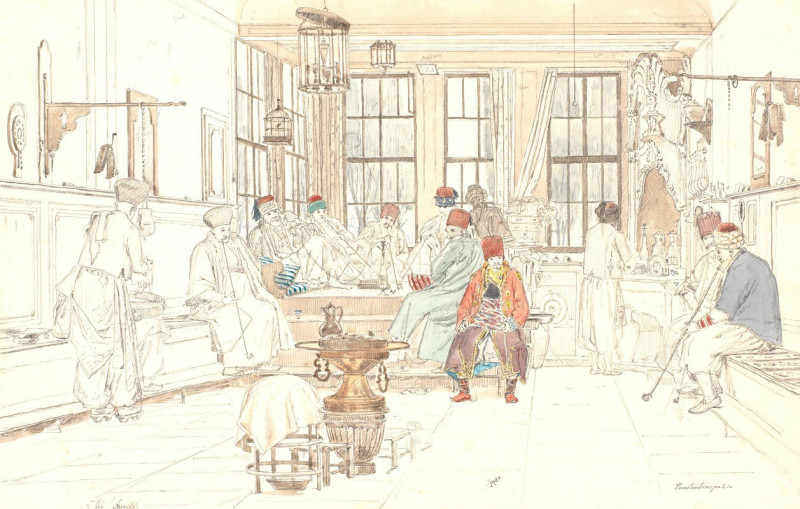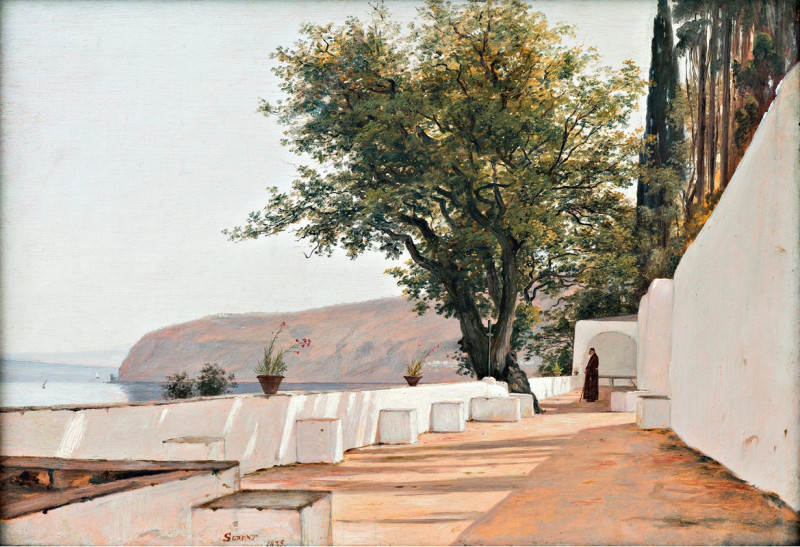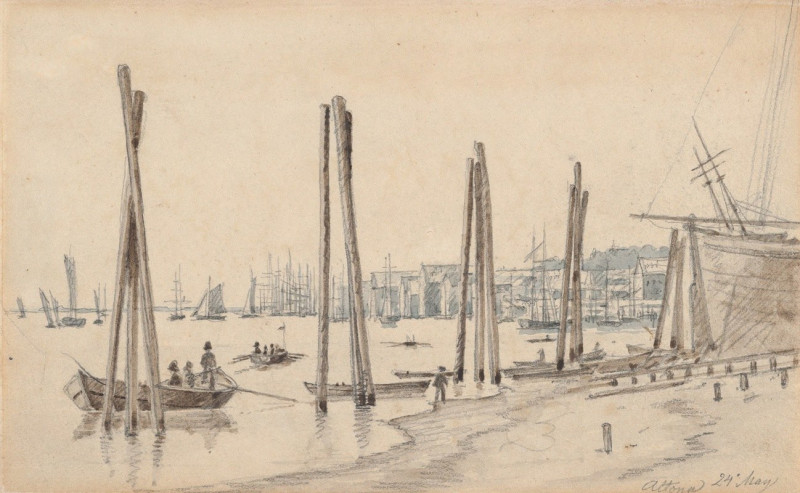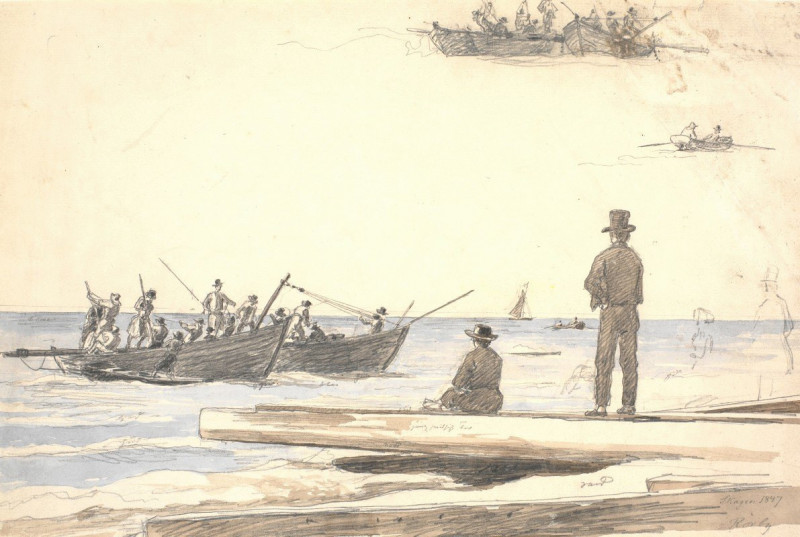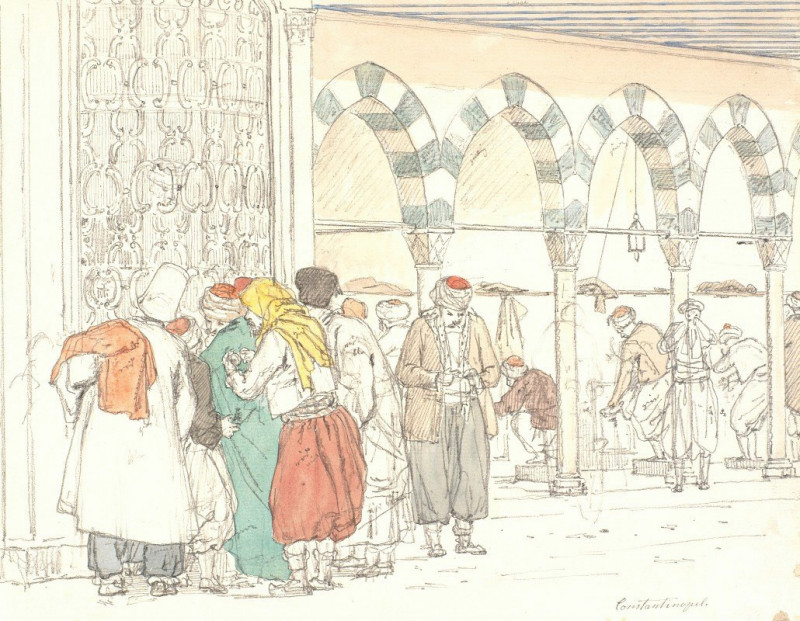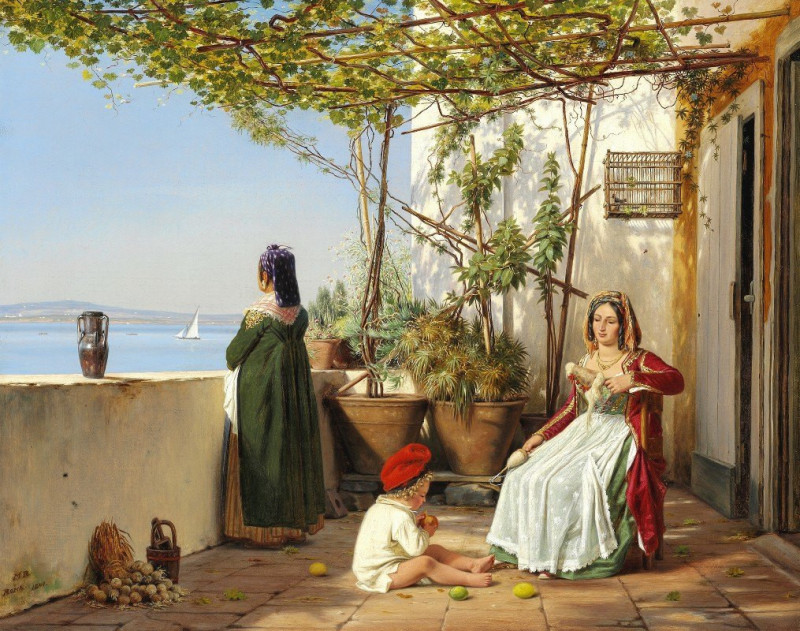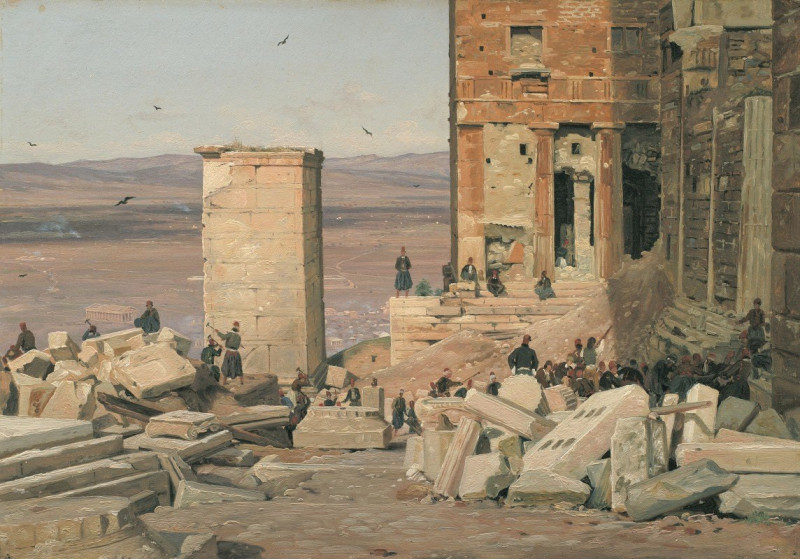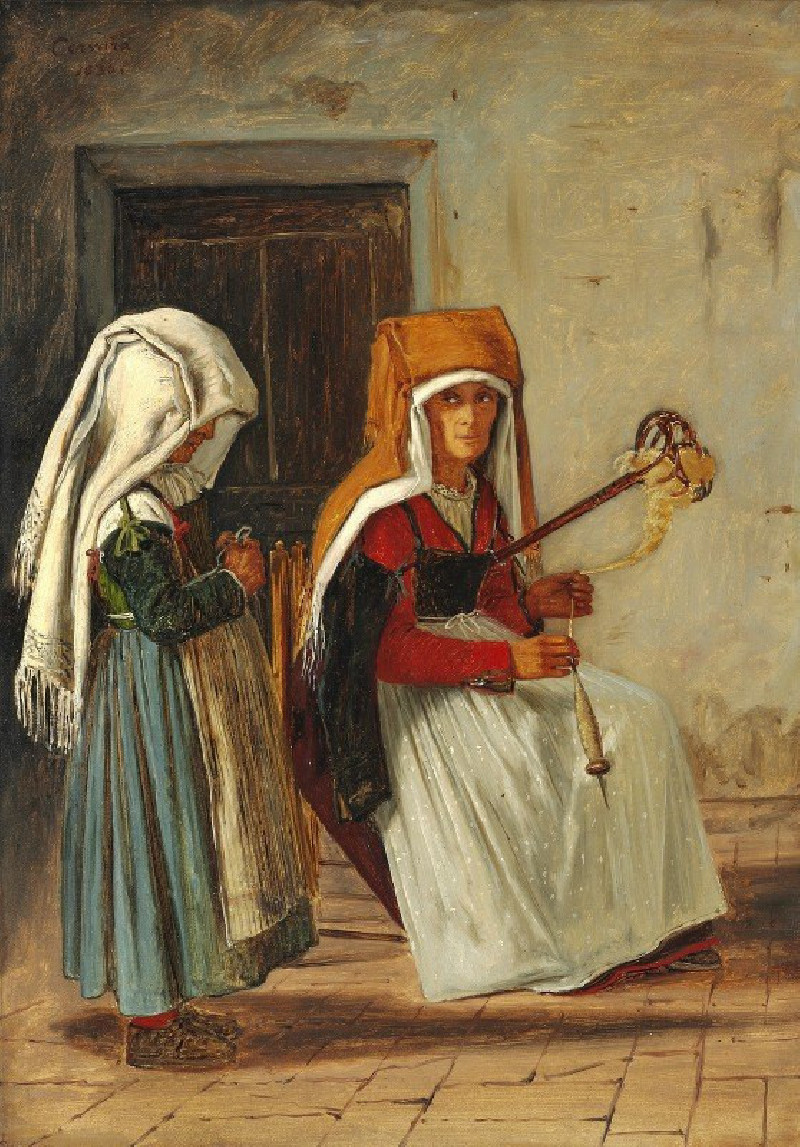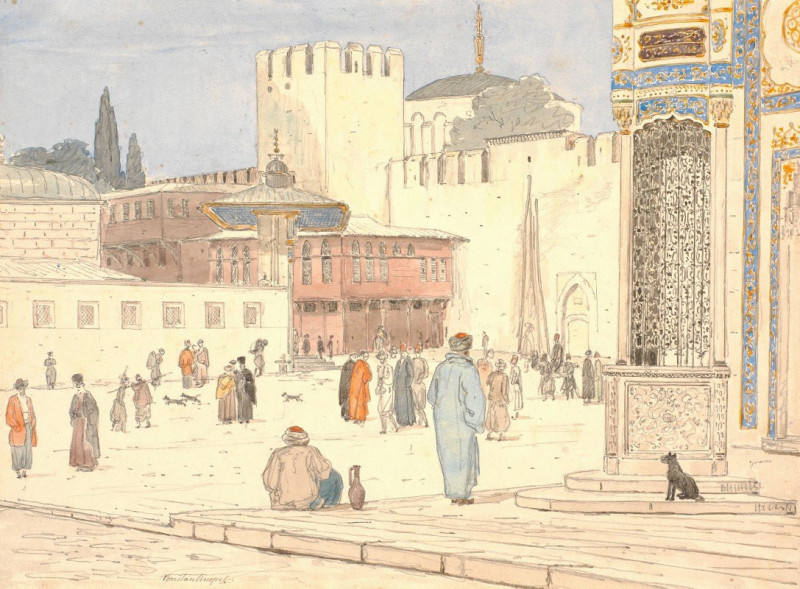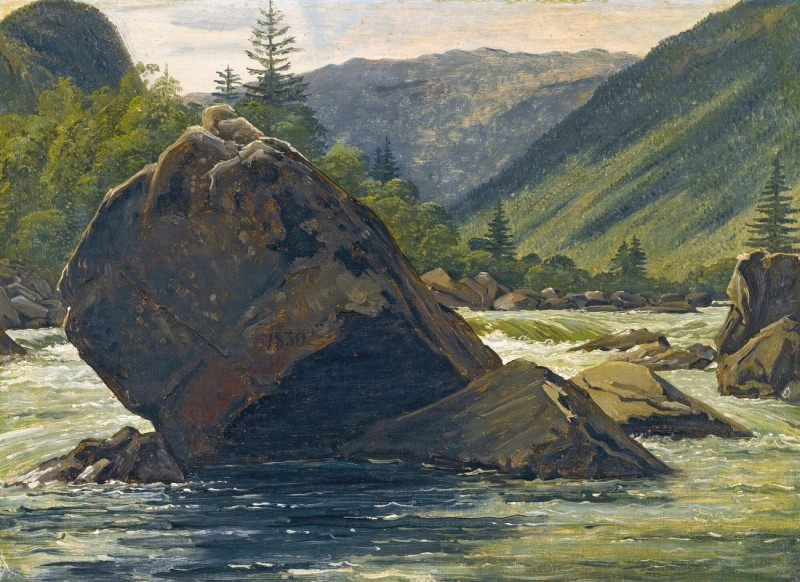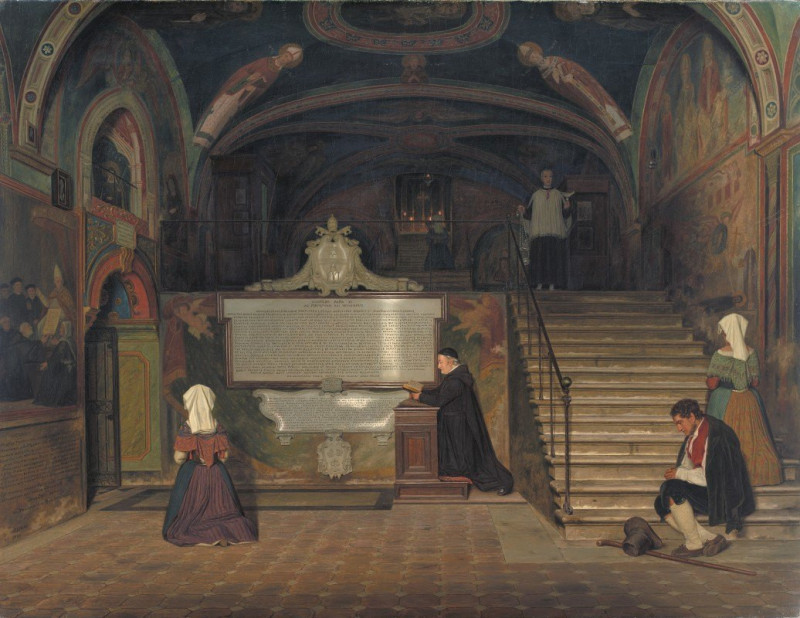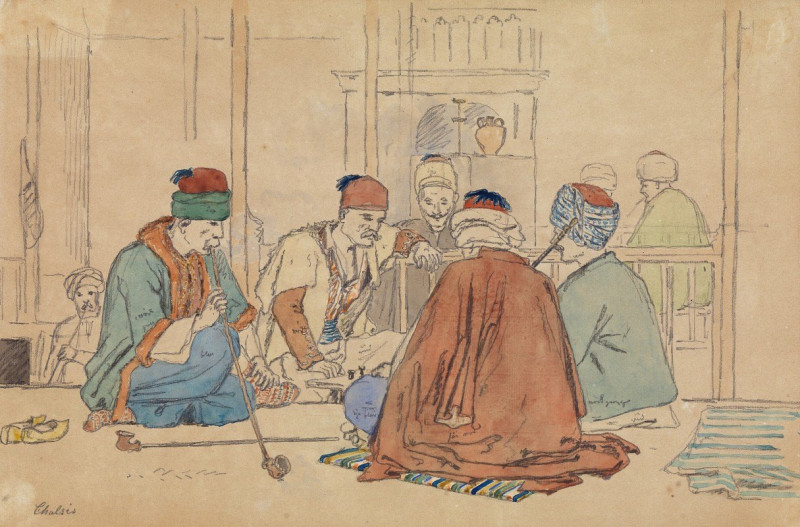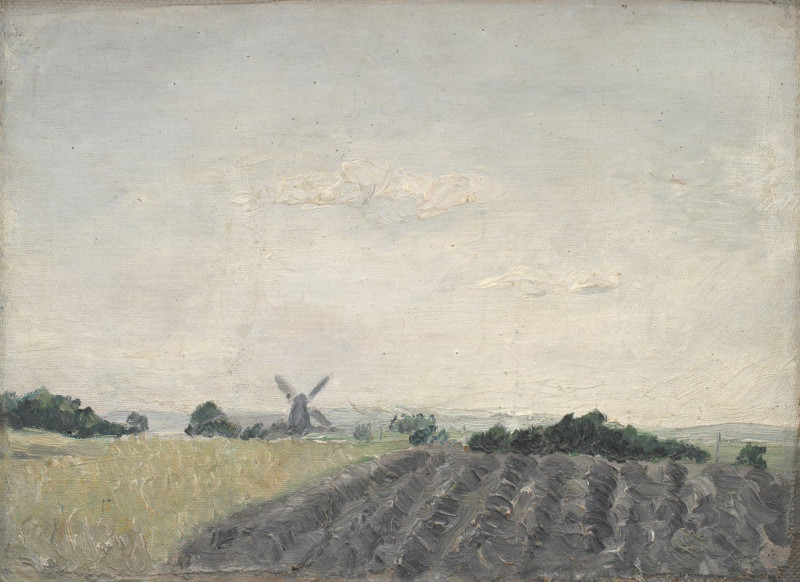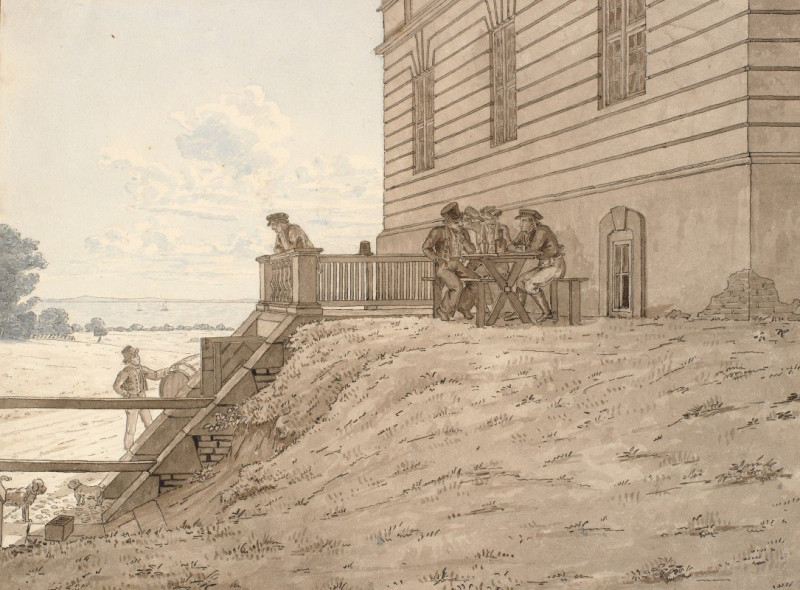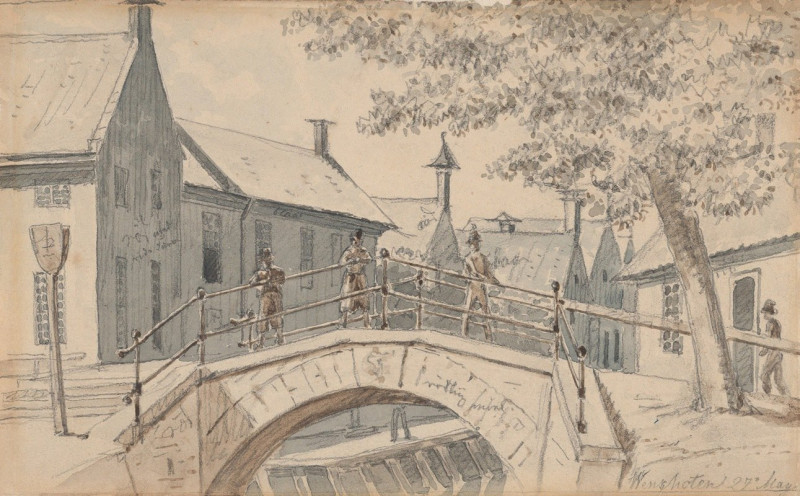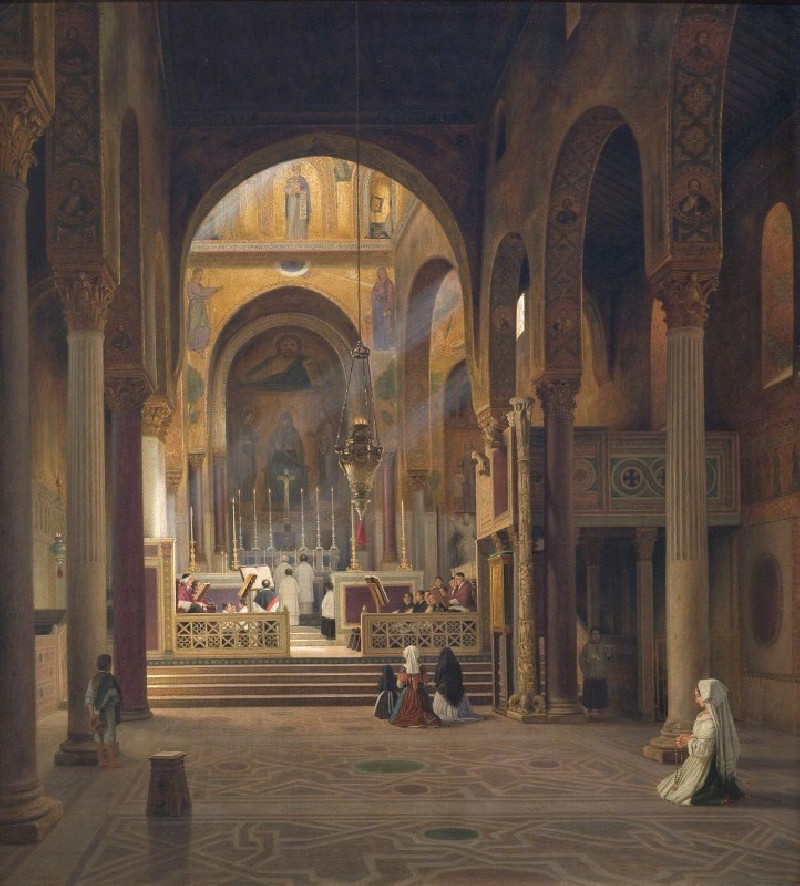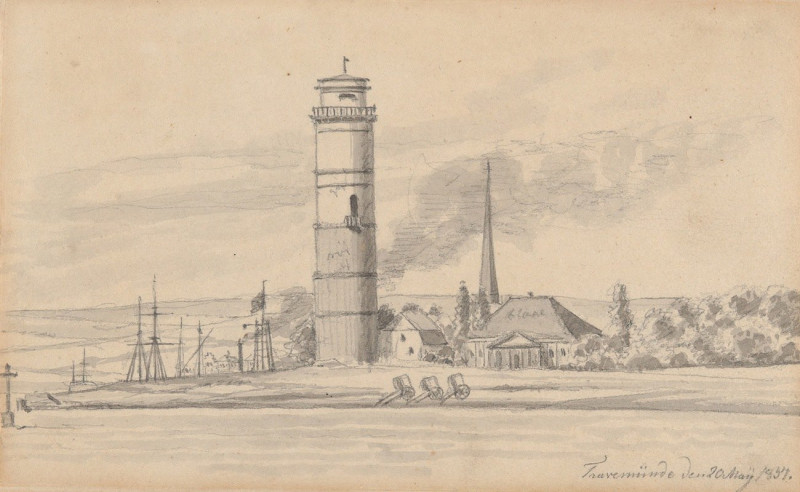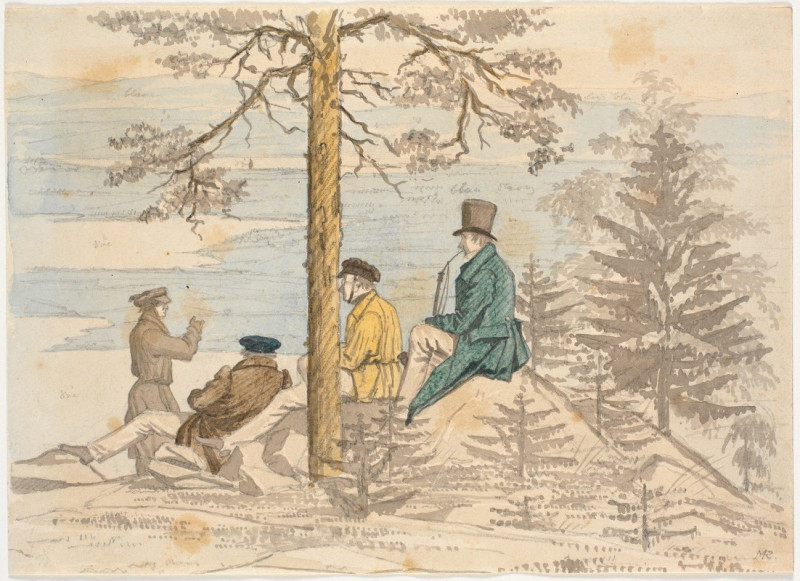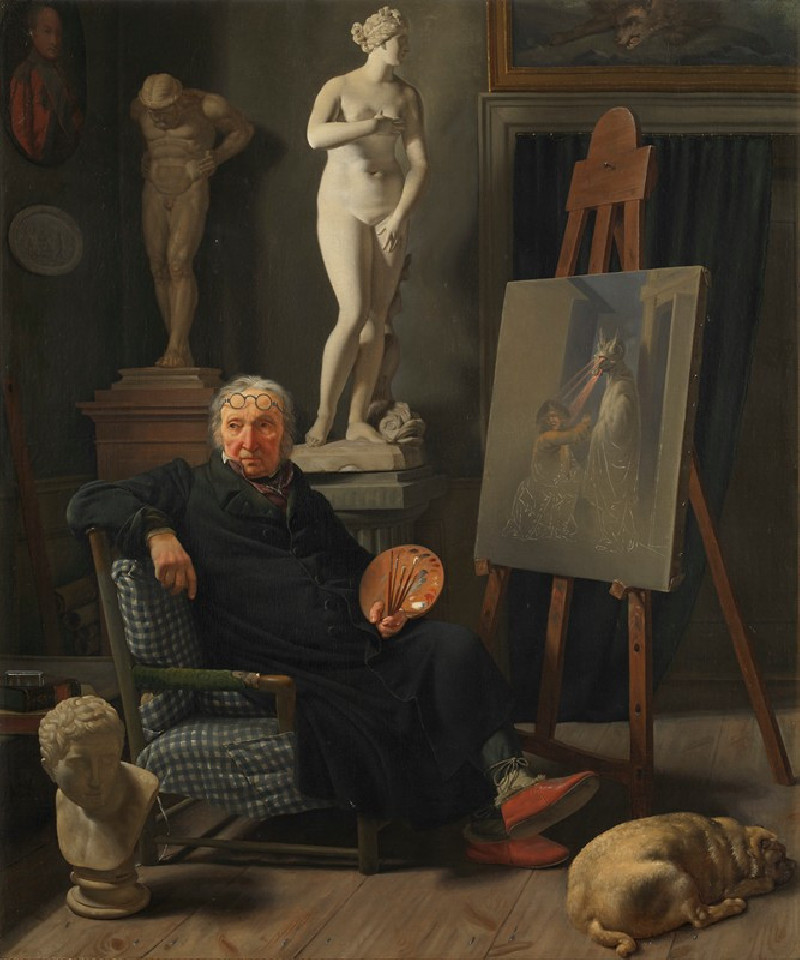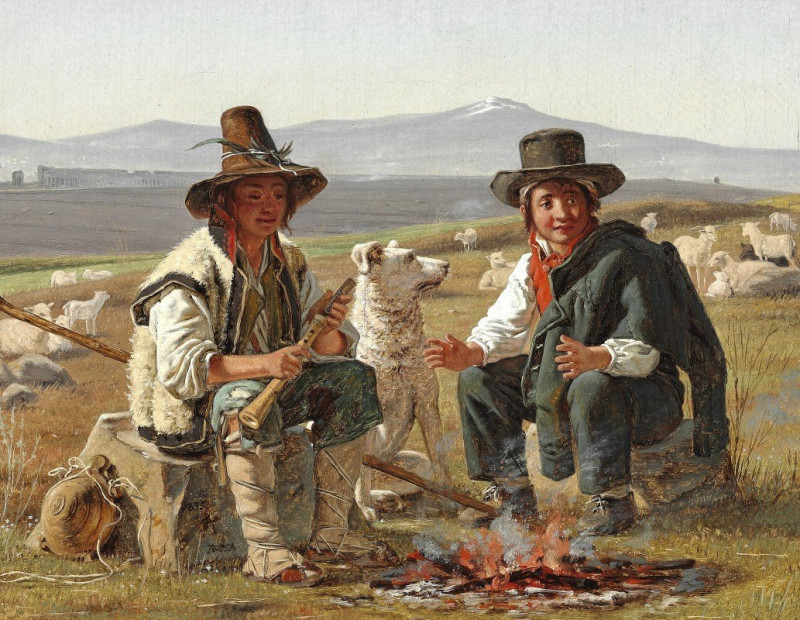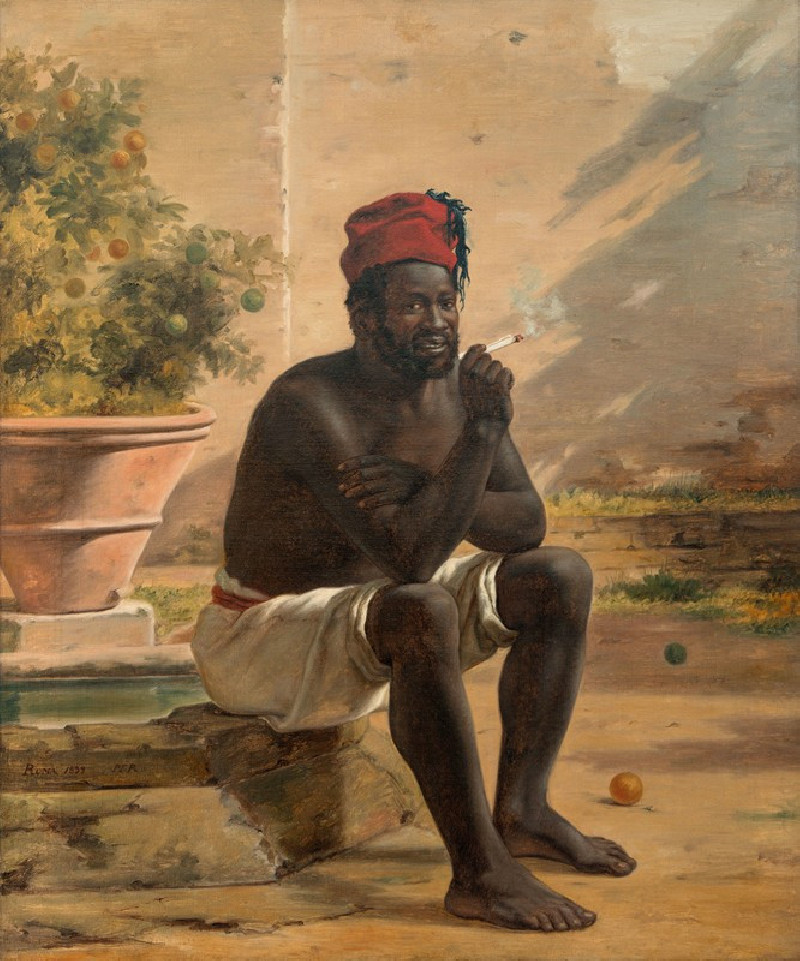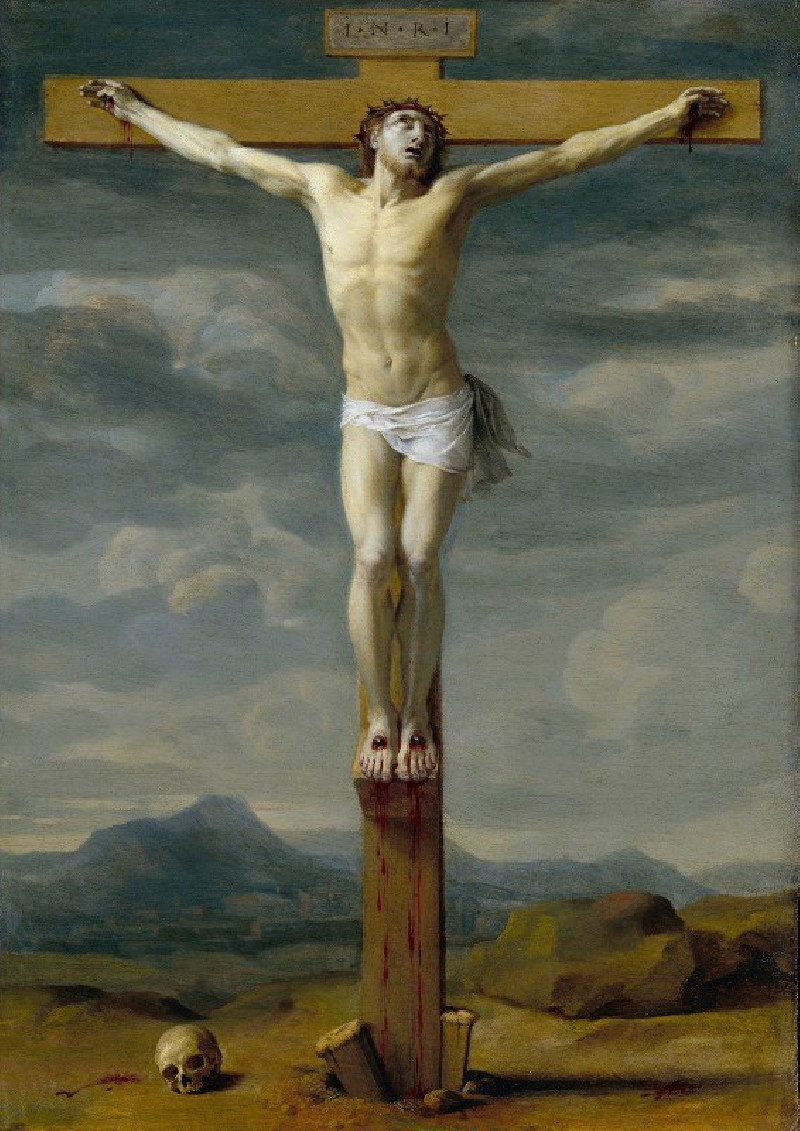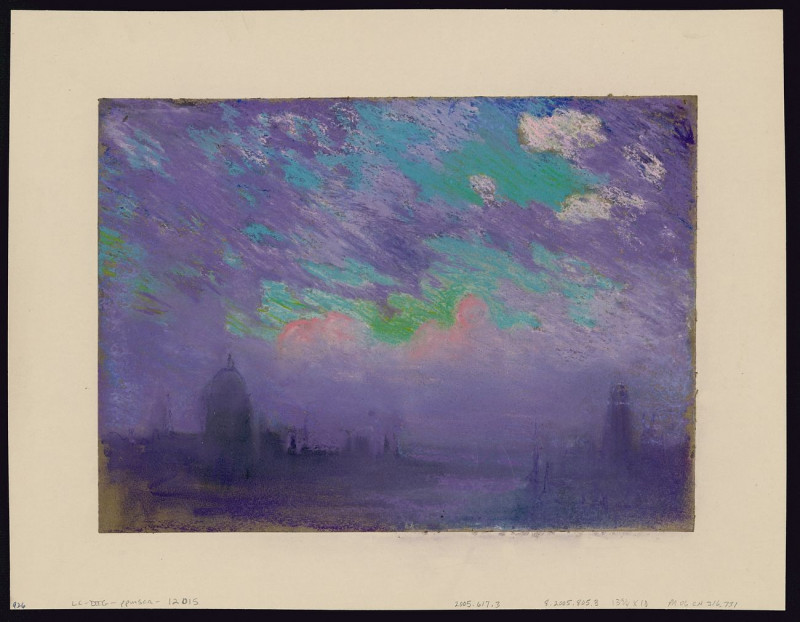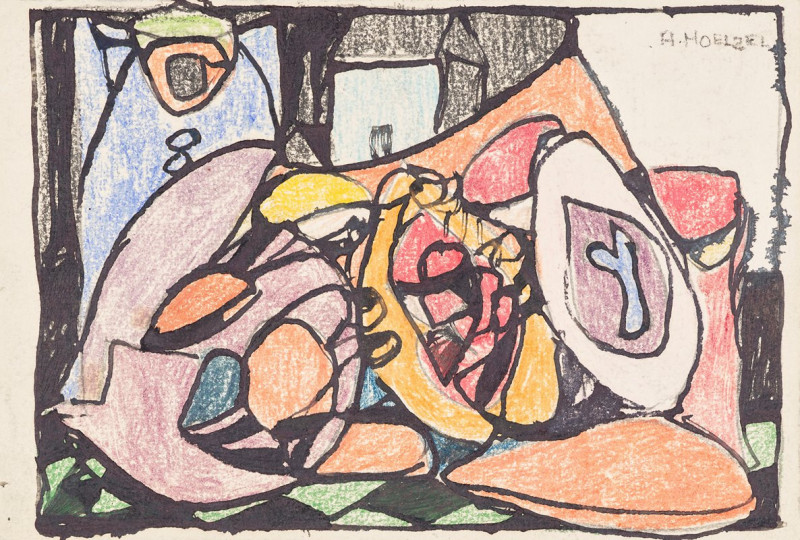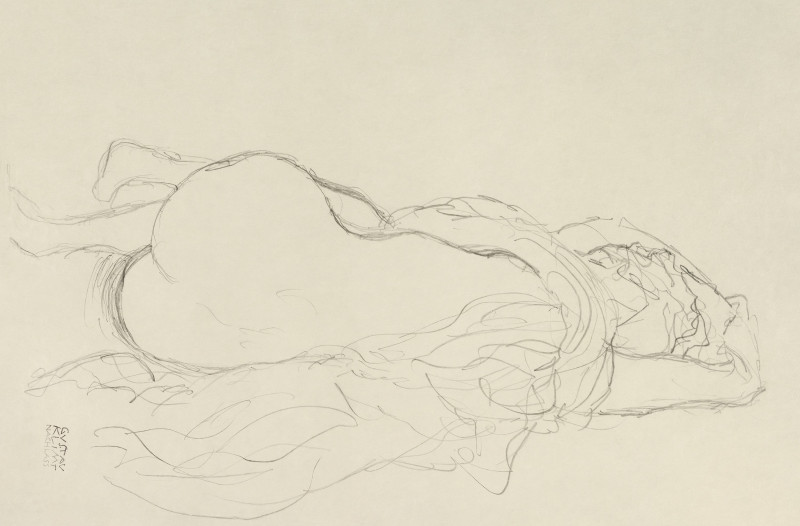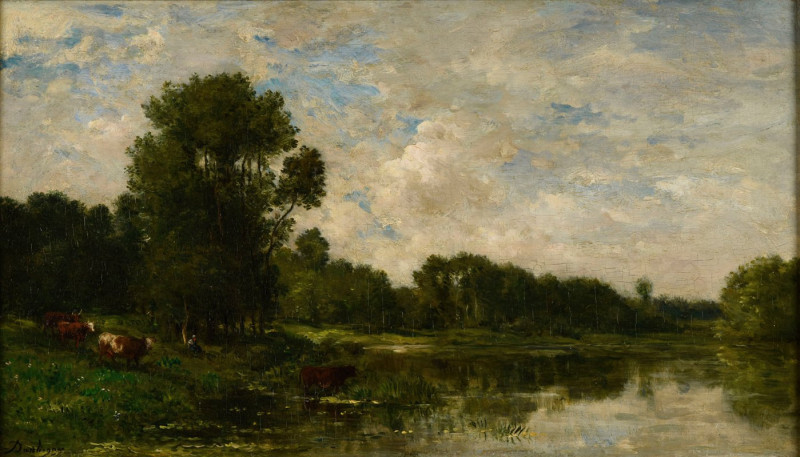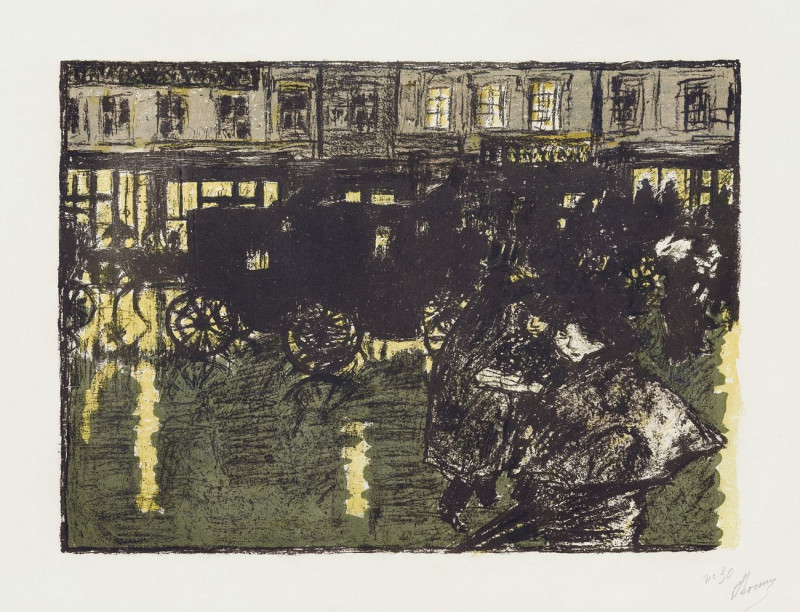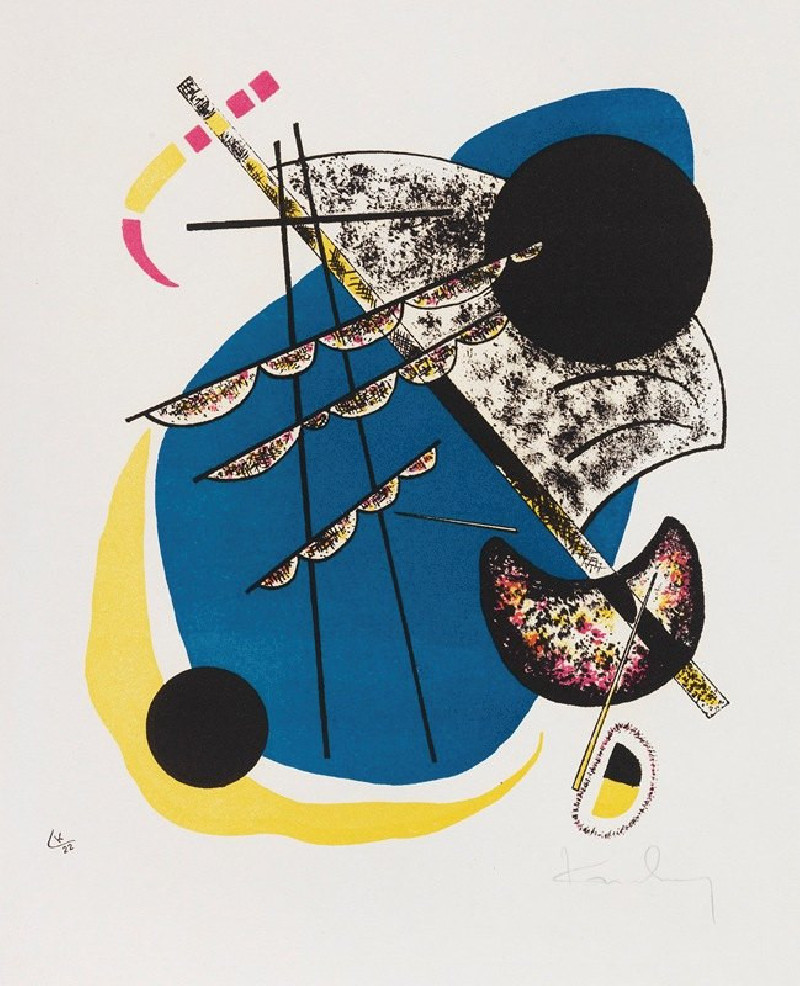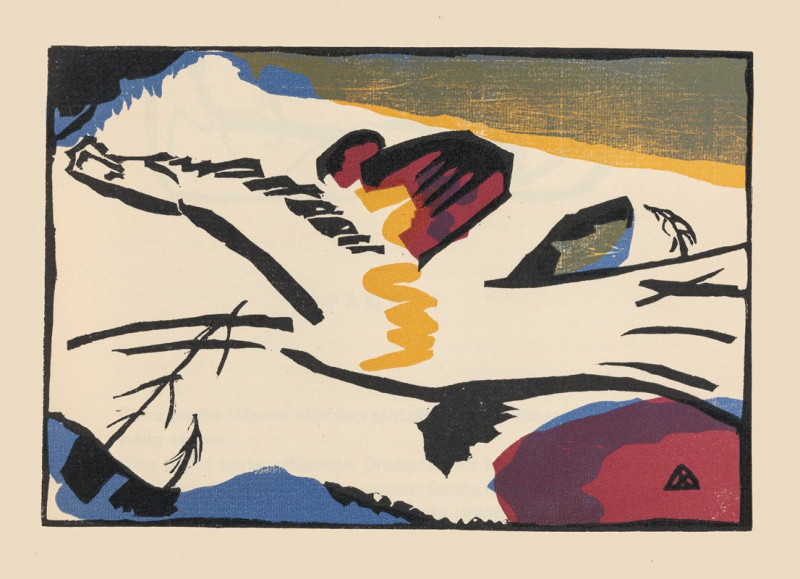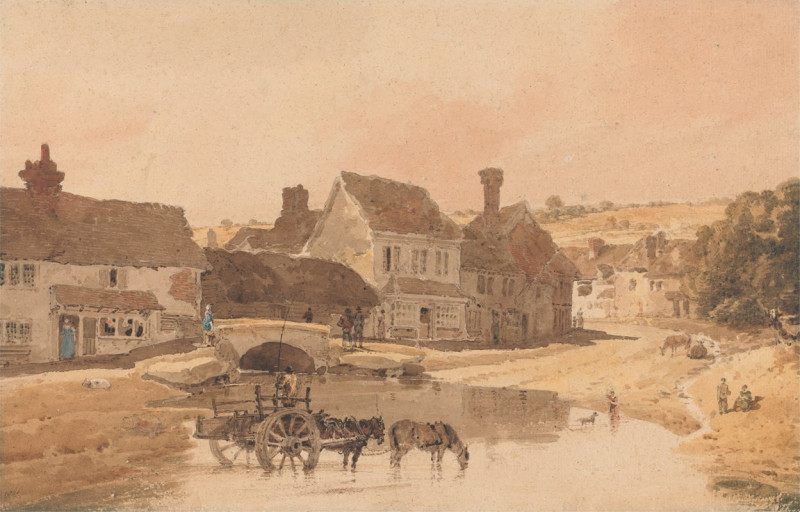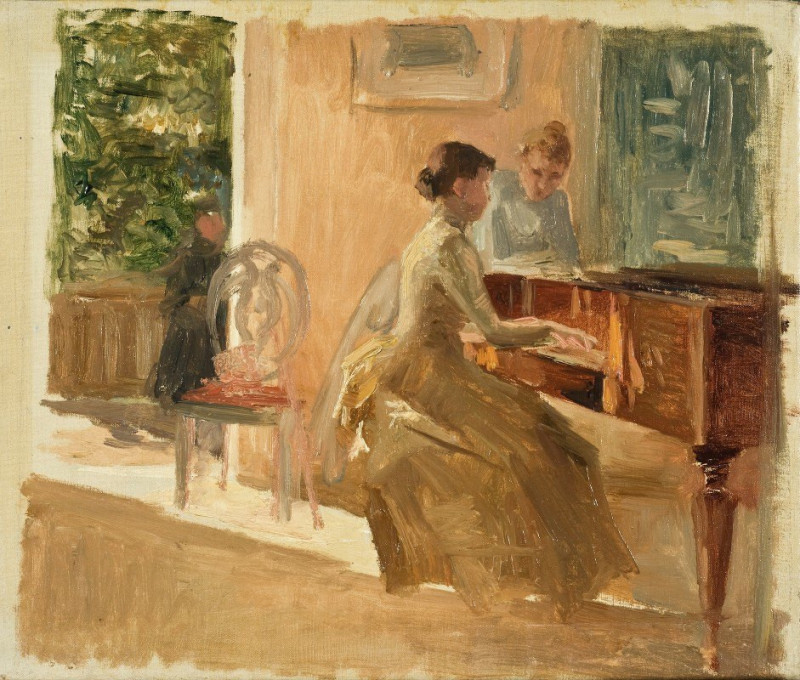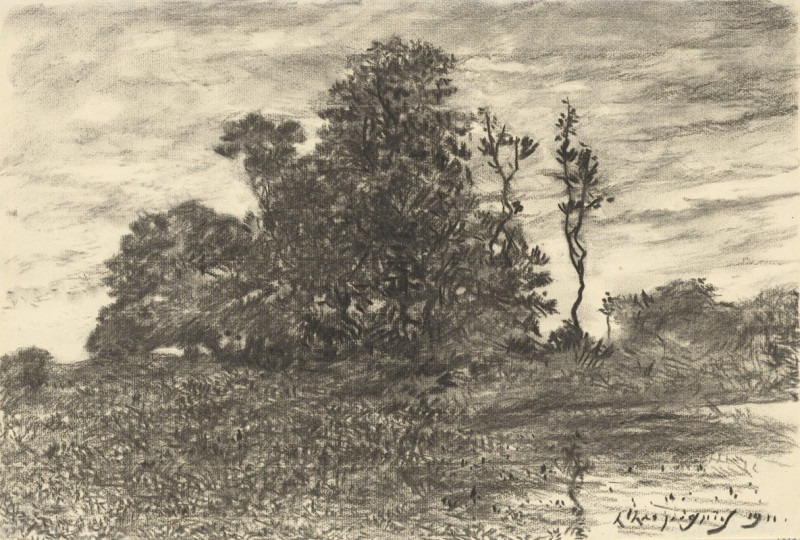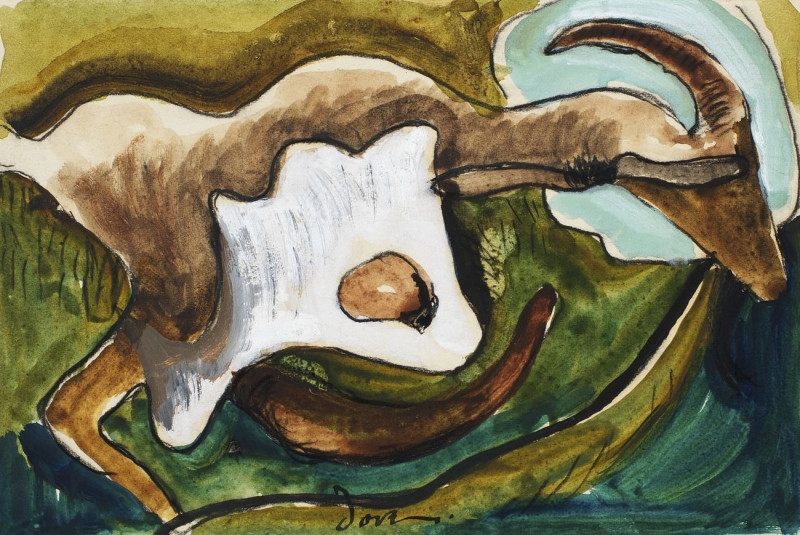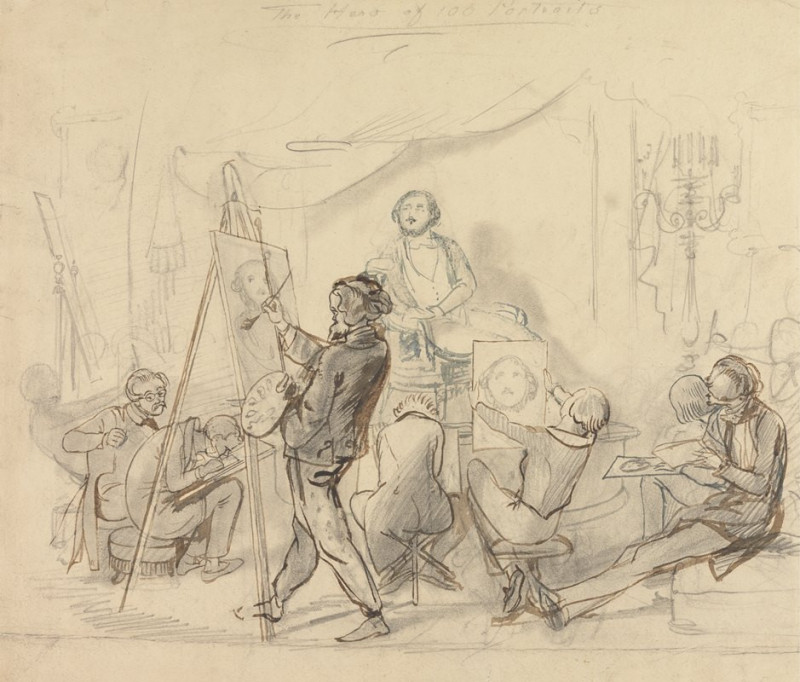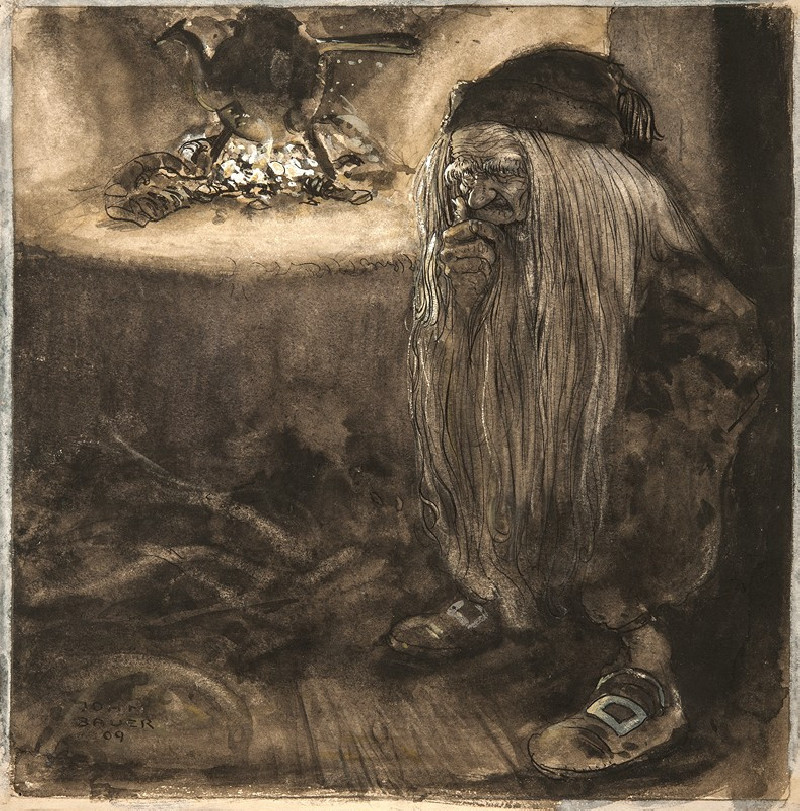En tyrkisk notarius opsætter en ægteskabskontrakt (1836)
Technique: Giclée quality print
Recommended by our customers
More about this artwork
Martinus Rørbye’s colorful and insightful watercolor, "En tyrkisk notarius opsætter en ægteskabskontrakt" from 1836, offers a vivid glimpse into an intimate moment within Turkish culture during the 19th century. The setting is an architectural enclave, adorned with columned arcades that lend both a sense of openness and intimacy. Underneath a warm-hued canopy, an assembly is focused around the drafting of a marriage contract.The central figure, a Turkish notary, appears deeply absorbed in his task, inscribing details onto a paper, indicating the solemnity and importance of the occasion. He is clad in traditional attire, intensifying the authenticity of the scene. Around him, various individuals, presumably members of the families involved in the marriage contract, engage in quiet discussion and observance of the proceedings. Their attire and bearing speak to a range of societal roles and are rendered with an attention to detail that Rørbye was renowned for.The artist skillfully uses color to enhance the texture of the scene; vibrant blues, oranges, and reds stand out, pointing viewers’ attention to the central action and the cultural richness of the setting. This piece not only captures a routine legal act but also echoes the broader cultural and social structures of the time, making it a valuable historical as well as artistic document.
Delivery
Returns
Martinus Christian Wesseltoft Rørbye was a Danish painter, known both for genre works and landscapes. He was a central figure of the Golden Age of Danish painting during the first half of the 19th century.
The most traveled of the Danish Golden Age painters, he traveled both north to Norway and Sweden and south to Italy, Greece and Constantinople. He was also the first Danish painter to take to painting in Skagen at the northern top of Jutland, almost half a century before the thriving community of Skagen Painters formed and came to fame, through Michael Ancher, Anna Ancher and P.S. Krøyer.

